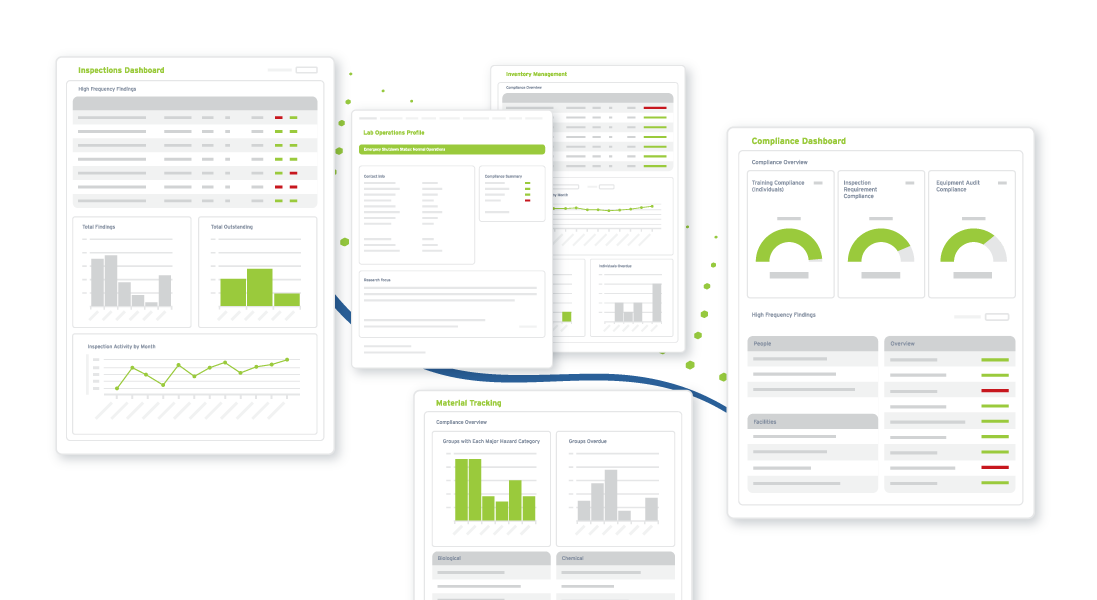Chemical Hazard Incidents: Prevention Starts With A Safety Culture

Laboratories and workplaces dealing with chemicals are constantly exposed to potential dangers. A chemical hazard refers to any chemical substance—solid, liquid, or gas—that can pose a risk to health, safety, or the environment. Whether it's a spill, improper storage, or exposure to toxic fumes, these hazards are ever-present. The good news is that these incidents are preventable. With effective systems that are implemented around a culture of safety, labs and industries can manage chemical waste, identify risks, and ensure safety protocols are adhered to.
What Are Chemical Hazards?
A chemical hazard is any substance that poses a physical or health risk to individuals or the environment. These hazards can stem from improper handling, storage, or disposal of chemicals. Common examples include:
- Flammable liquids like ethanol
- Toxic gases like chlorine
- Reactive solids like sodium
- Corrosive acids like sulfuric acid
According to OSHA, exposure to these hazards can lead to severe consequences, including acute injuries, chronic health effects, and environmental damage.
Types of Chemical Hazards
Chemical hazards are classified into different types, including:
1. Physical Hazards
- Flammability: Substances that catch fire easily, such as gasoline or ethanol.
- Reactivity: Chemicals like peroxides that can react violently with other substances.
- Explosivity: Materials that can detonate under certain conditions.
2. Health Hazards
- Toxicity: Substances that can cause immediate or long-term health issues, such as benzene (a carcinogen).
- Corrosivity: Acids and bases that can cause burns on contact.
- Respiratory Risks: Chemicals that harm the respiratory system, such as ammonia or chlorine gases.
3. Environmental Hazards
- Chemicals that are harmful to aquatic life or ecosystems, such as pesticides or heavy metals.
To help identify these risks, laboratories and industries rely on chemical hazard symbols. These symbols, standardized by the Globally Harmonized System (GHS), provide warnings such as "flammable," "toxic," or "corrosive."
Are Chemical Hazards Always Visible?
A critical question is: Are chemical hazards always visible? The answer is no. Many hazardous chemicals, such as carbon monoxide or odorless toxic gases, cannot be detected without proper monitoring equipment. This invisibility underscores the importance of robust safety protocols and inventory management systems.
As highlighted by the Princeton Laboratory Safety Manual, comprehensive hazard assessments and proactive safety measures are essential to mitigating these hidden dangers.
The Role of Chemical Waste Disposal
Proper chemical waste disposal is crucial for minimizing hazards. Inadequate disposal practices can lead to environmental contamination, chemical reactions, or safety risks. For instance, improperly disposing of a solid chemical hazard, such as a reactive metal, could result in fire or explosion.
SciShield’s Hazardous Waste Solutions provide a seamless system for managing and disposing of hazardous materials safely. The platform helps labs and industries track chemical waste from its source to its final disposal, ensuring compliance with environmental regulations and reducing risks.
How SciShield Helps Prevent and Manage Chemical Hazards
1. Inventory Management
SciShield’s ChemTracker Solutions allow labs to track chemicals throughout their lifecycle—from acquisition to proper disposal. This ensures that no hazardous material is mishandled or forgotten, which is critical for reducing risks associated with solid chemical hazards and toxic substances.
2. Inspection and Compliance Tools
SciShield’s Inspections & Audits Solutions streamline safety audits and ensure that all chemicals are stored and labeled according to regulations. This includes tracking chemical hazard symbols to verify that all chemicals are clearly marked for easy identification.
3. Training and Awareness
SciShield’s Training LMS Solutions empower personnel to recognize and mitigate chemical hazards effectively. Through interactive modules and certifications, employees learn to identify risks, respond to emergencies, and manage chemical waste disposal safely.
4. Real-Time Monitoring
For high-risk materials, real-time monitoring is essential. SciShield provides tools to ensure that hazardous chemicals, especially those with delayed chemical hazard effects like radiation or toxicity, are continuously monitored.
Case Studies and Supporting Data
The dangers of chemical hazards and the need for effective management are well-documented. For example:
- A study published in BMC Occupational and Environmental Medicine highlights the long-term health effects of chemical exposure, particularly in industrial settings.
- OSHA’s guidelines emphasize that improper handling of chemical hazards is a leading cause of workplace injuries and illnesses.
- According to the HAZOP guide by SafetyCulture, hazard and operability studies are vital for identifying and managing chemical risks, further validating the importance of platforms like SciShield.
Building a Culture of Safety with SciShield
Effective management of chemical hazards goes beyond compliance—it’s about creating a culture of safety. SciShield’s unified platform integrates tools for Hazardous Waste Solutions, EHS Management, and Incident Reporting, helping labs and industries take a proactive approach to risk management.
By integrating these tools, SciShield not only helps prevent incidents but also streamlines operations, reduces costs, and ensures that every team member is equipped to handle hazards responsibly.
Conclusion
Chemical hazards are a reality in any lab or workplace dealing with hazardous materials. From flammable liquids to reactive solids, these dangers require vigilant management to prevent incidents and protect both people and the environment. Platforms like SciShield play a critical role in mitigating these risks through advanced tools for inventory management, training, inspections, and waste disposal.
With SciShield, the incidents caused by chemical hazards can truly become a thing of the past. Learn more about how SciShield can transform your approach to chemical safety and compliance.
Ready to improve your chemical hazard management? Schedule a demo with SciShield today and discover how we can help your lab or industry achieve safety excellence. Visit Hazardous Waste Solutions or ChemTracker Solutions to get started.



